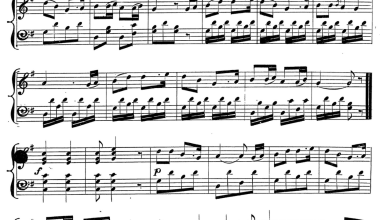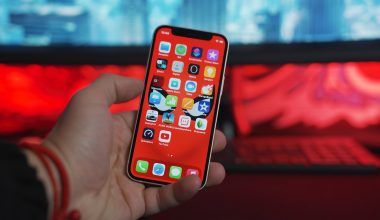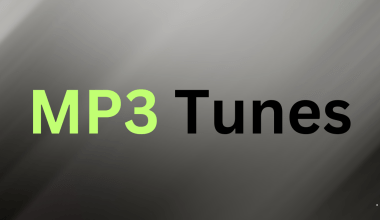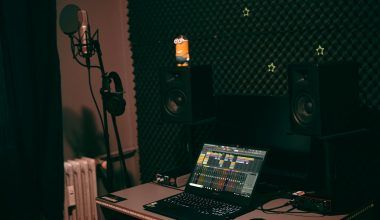Have you ever wondered why your recordings sound so different depending on the microphone you use? One big reason is something called microphone polar patterns. Don’t worry if this term sounds complicated—it’s just a fancy way to describe how a microphone picks up sound from different directions.
Whether you’re singing, recording a podcast, or capturing sounds in nature, understanding polar patterns will help you choose the right microphone for the job. This guide is here to make it super easy for you to understand microphone polar patterns and how they work.
What Are Microphone Polar Patterns?
Imagine a microphone as a magical ear. Depending on its polar pattern, this ear can listen closely to sounds in front of it, around it, or even behind it. A microphone polar pattern tells us where the mic is most sensitive to sound and where it tries to block noise.
For example:
- Some microphones are like friendly listeners—they pick up everything around them.
- Others are picky and only focus on sounds coming from one direction.
Polar patterns are important because they decide:
- How much background noise will be captured.
- How clear your main sound will be.
Why Are Polar Patterns Important?
Choosing the wrong polar pattern can make your recordings sound noisy or unclear. But don’t worry, with a little understanding, you’ll know exactly what to use.
Here’s why they matter:
- Music: To focus on instruments or vocals without capturing unwanted noise.
- Podcasts: To ensure your voice sounds crisp and clear.
- Nature Sounds: To capture the environment without missing tiny details.
The Main Types of Microphone Polar Patterns
Microphone polar patterns come in different types, each suited for specific uses. Let’s break them down in simple terms.
1. Omnidirectional Microphone Pattern
- How It Works: Picks up sound equally from all directions—front, back, and sides.
- Best For:
- Recording group conversations.
- Capturing natural sounds like birds or wind.
- Good To Know: While it captures everything, it’s not great in noisy places.
2. Cardioid Microphone Pattern
- How It Works: Focuses on sound coming from the front and blocks most sounds from the back.
- Best For:
- Singing or speaking into a mic.
- Reducing unwanted noise in live events.
- Why It’s Popular: Many beginners use cardioid mics because they’re great at isolating the sound you want.
3. Supercardioid and Hypercardioid Patterns
- How They Work: Like cardioid but more focused. These patterns capture a little sound from the back as well.
- Best For:
- Noisy settings where you need to isolate sound from a specific source.
- Recording solo instruments in a studio.
- A Note of Caution: Since they pick up some sound from the rear, placement is key.
4. Bidirectional (Figure-8) Pattern
- How It Works: Picks up sound from the front and back but blocks sounds from the sides.
- Best For:
- Recording two people sitting opposite each other.
- Capturing duets or interviews.
- Pro Tip: This pattern works well in quiet spaces.
5. Shotgun Microphone Pattern
- How It Works: Highly directional, focusing on sound directly in front.
- Best For:
- Filming movies or interviews outdoors.
- Capturing clear dialogue in noisy environments.
- Important To Remember: Shotgun mics need to be aimed very precisely.
6. Lobar Polar Pattern
- How It Works: Super narrow focus, even more directional than a shotgun mic.
- Best For:
- Capturing sounds from far away, like wildlife.
- Special Tip: It’s a great choice for documentaries.
Choosing the Right Polar Pattern
Now that you know about the different polar patterns, how do you pick the right one? It depends on what you’re recording!
For Singing or Voice Recording
- Go for a cardioid microphone. It focuses on your voice and cuts out noise from the sides.
For Group Recordings
- Use an omnidirectional mic to capture everyone’s voice equally.
For Nature or Ambience
- Try an omnidirectional or shotgun mic, depending on how much focus you want.
For Podcasts or Interviews
- A bidirectional mic is great for two people talking.
For Movies and Videos
- Use a shotgun mic for capturing clear dialogue.
Real-Life Examples of Polar Patterns
- Recording a Podcast: You’re sitting in your home studio, and you want only your voice, not the fan or background hum. A cardioid mic is your best friend here.
- Shooting a Film: The actor is speaking outdoors, but there’s a noisy crowd. A shotgun mic will help focus on their voice.
- Capturing a Symphony: You want the sound of every instrument and the echoes of the hall. An omnidirectional mic works perfectly.
Tips for Using Microphone Polar Patterns
To get the best results:
- Test Your Mic: Spend time experimenting with angles and positions.
- Use Pop Filters: Especially for cardioid mics, to reduce harsh sounds like “p” or “s.”
- Control Your Environment: Try to minimize background noise for clearer recordings.
- Learn Your Mic’s Sweet Spot: Every mic has an ideal position for sound pickup.
Advanced Tips for Polar Pattern Lovers
If you want to go pro, here are some advanced ideas:
- Blend Patterns: Use multiple microphones with different polar patterns for depth.
- Positioning: For supercardioid mics, angle them slightly to avoid picking up too much rear noise.
- Experiment: Don’t be afraid to try unconventional setups to find unique sounds.
Frequently Asked Questions
Q: Can one microphone have multiple polar patterns?
A: Yes! Some microphones let you switch between patterns, making them very versatile.
Q: Are polar patterns important for beginners?
A: Absolutely! Understanding even the basics can improve your recordings a lot.
Q: Which polar pattern is the most popular?
A: The cardioid pattern is the most common because it works well in many situations.
Conclusion
Understanding microphone polar patterns doesn’t have to be complicated. Think of them as the microphone’s way of listening to the world. Whether you’re recording music, podcasts, or even nature, choosing the right polar pattern makes a huge difference.
Take the time to explore your microphone, test different setups, and find what works best for you. With a little practice, you’ll be recording like a pro in no time.
Related Articles:
For further reading, explore these related articles:
For additional resources on music marketing and distribution, visit Deliver My Tune.






